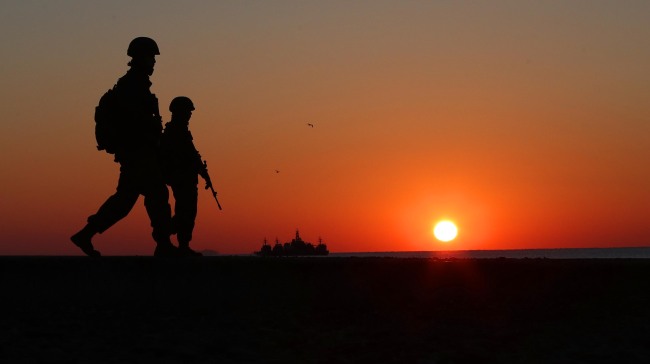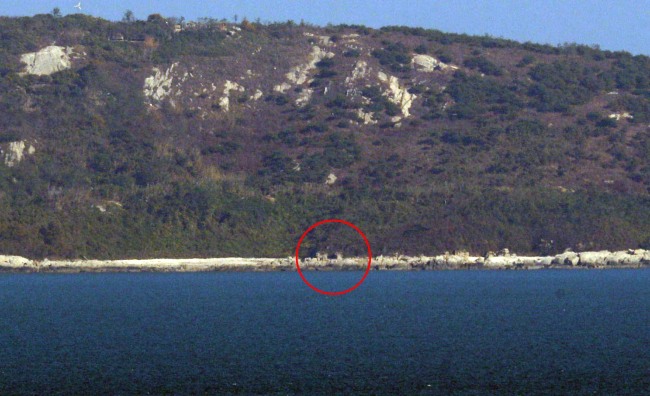Eight years on, artillery sound silenced on Yeonpyeong Island
Most coastal artillery guns sealed near border islands, except for one in North Korean territory
By Yeo Jun-sukPublished : Nov. 1, 2018 - 18:55
YEONPYEONGDO, Incheon -- When North Korean artillery shells slammed into a residential area on the island of Yeonpyeongdo in 2010, the barrage of fire blew up houses, reducing them to smoldering ruins.
Four people died and dozens more were injured in the North’s first attack on civilians since the end of the 1950-53 Korean War. Among the victims were Marines serving at the Yeonpyeongdo artillery unit, which fired back toward the North’s western artillery bases.
Eight years later, the two Koreas are seeking to prevent the possibility of any skirmishes in the volatile region. Starting Thursday, all hostile acts in the cross-border region were ceased in accordance with a comprehensive inter-Korean military agreement signed last month.
“Those measures are the first step on a new path of the peace and prosperity on the Korean Peninsula,” said Army Gen. Park Han-ki, chairman of the Joint Chiefs of Staff, as he toured Yeonpyeongdo. “Now, our military will stand at the forefront of peace.”
The enforcement of tension-reducing measures could be seen from the tip of Yeongpyeongdo, where the South Korean military watched the movement of the North Korean artilleries units located about 10 kilometers from the South Korean island.

Among the four guns at the North Korean artillery base in Gaemuri, from which dozens of shells were launched during the Yeongpyeongdo bombing, one was not completely covered up and seemed to be available for operation.
South Korean military officials said that is the only artillery gun that has been not completely shut down since Oct. 25, when the military said most artillery guns were covered. All other costal artillery guns were completely sealed, officials added.
“We don’t think it is a violation of the inter-Korean military agreement. It appears to be unintentional,” a military official told reporters, requesting anonymity due to the sensitivity of the issue.
“When we informed North Korea about (the artillery gun in Gaemuri), North Korea told us they were aware of it and would solve the issue. ... We don’t know exactly what was going on, but we detected some working crews early in the morning.”
Covering artillery is one of the measures aimed at preventing any type of hostile act across the border region, which includes establishing a no-fly zone and a massive buffer zone along the land and maritime border.

On the ground, artillery and field exercises have been suspended within 5 kilometers of the Military Demarcation Line that separates the two Koreas. The two Koreas’ armies are prohibited from conducting live-fire artillery drills and regiment-level field maneuvering exercises, or those by bigger units.
The two Koreas’ air forces are banned from flying fighter jets, helicopters, drones and balloons above the region surrounding the MDL. The no-fly zone extends 40 kilometers north and south of the MDL in the east and 20 kilometers in the west for fixed-wing aircraft.
“We have officially declared a no-fly zone by issuing a NOTAM (Notice to Airman),” the Defense Ministry said Thursday, referring to the aviation notification system designed to alert aircraft pilots of potential hazards along a flight route or location that could affect the safety of the flight.
Some have raised concerns that suspending artillery exercises in the waters close to North Korea will undermine South Korea’s readiness posture, given the history of the North’s surprise provocations at the border islands in the West Sea.
The Marine Corps announced it would conduct “rotational artillery drills” by relocating K9 self-propelled howitzers at Yeonpyeongdo. The weapons would be moved to land for fire drills and returned to Yeonpyeongdo when the exercise is over.
Regardless of the suspension of live fire drills near the maritime border, Marine officers serving on Yeonpyeongdo said they will proceed with routine training designed to prevent possible provocations from North Korea.
“We have carried out shooting procedure training more than four times a day,” a Marine Corps officer told reporters, requesting anonymity. “We’re confident that we can immediately respond to the enemy’s provocations.”
By Yeo Jun-suk (jasonyeo@heraldcorp.com)










![[Today’s K-pop] BTS pop-up event to come to Seoul](http://res.heraldm.com/phpwas/restmb_idxmake.php?idx=644&simg=/content/image/2024/04/17/20240417050734_0.jpg&u=)





![[KH Explains] Hyundai's full hybrid edge to pay off amid slow transition to pure EVs](http://res.heraldm.com/phpwas/restmb_idxmake.php?idx=652&simg=/content/image/2024/04/18/20240418050645_0.jpg&u=20240419100350)

